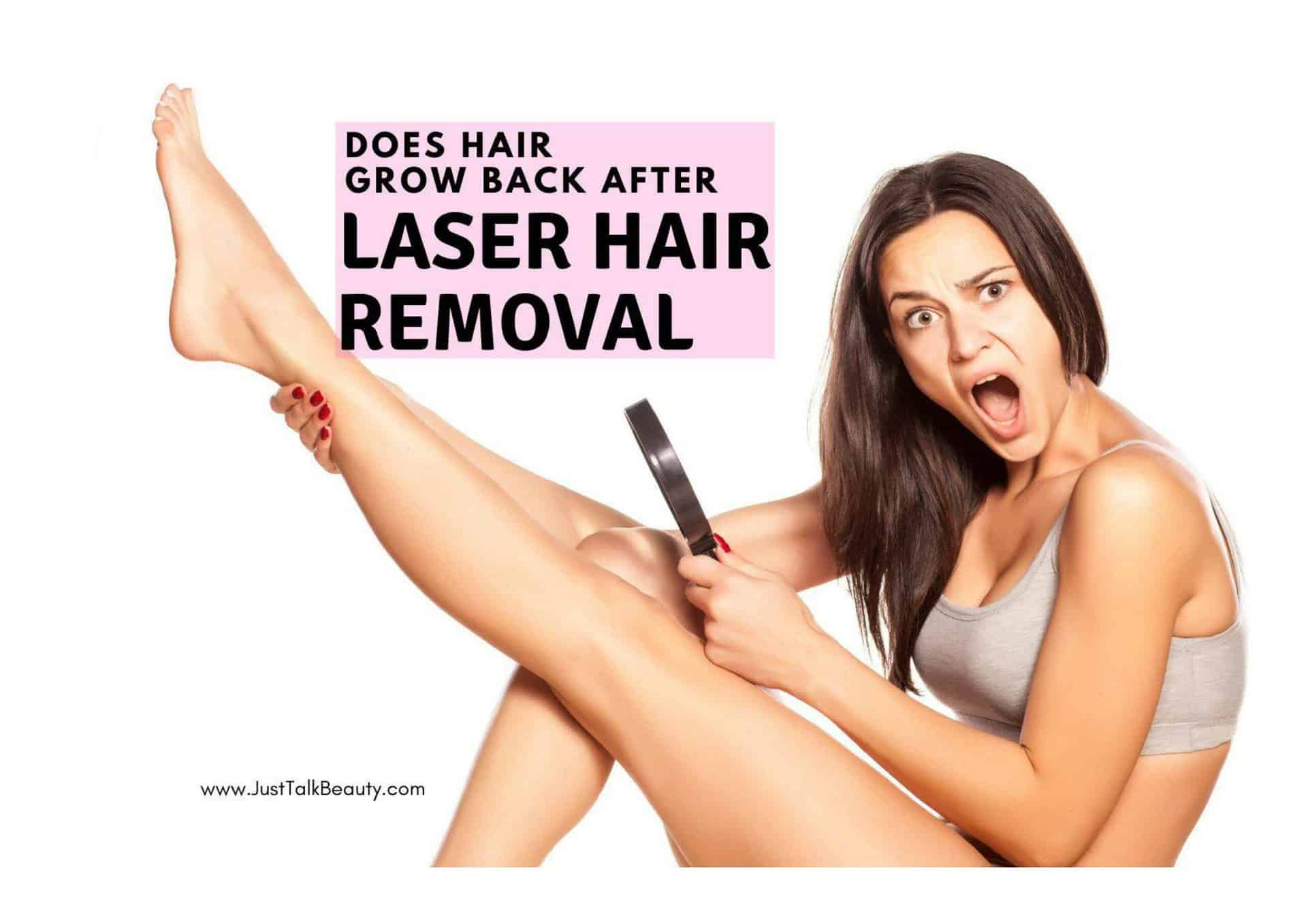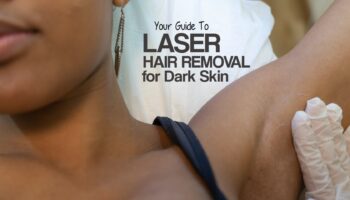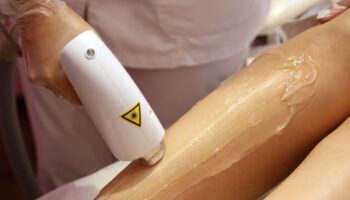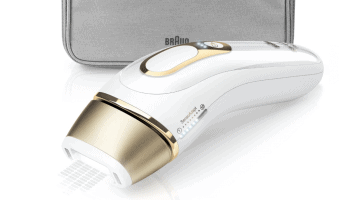Will hair grow back after laser hair removal? Not surprisingly, this is a common question among women seeking an effective solution to getting rid of unwanted body and facial hair. After all, who wants to shell out on expensive treatments if the results are unclear?
In this blog post, we’ll cover everything you need to know about laser hair removal, including how it works and its potential for providing permanent results as well as whether or not the treated hairs will grow back and what their texture may be.
We’ll also give you some valuable tips for maintaining your smooth skin after undergoing this popular cosmetic procedure.
Table of Contents
Understanding Laser Hair Removal
Laser hair removal is a popular noninvasive cosmetic procedure that targets the pigment in individual hairs and destroys their follicles, preventing them from growing back. It works best on people with light complexions who have dark hair and requires multiple treatments spaced apart to achieve optimal results.
It’s not a treatment that suits every individual. So if you’re thinking that a couple of rounds of laser will leave you hair free forever, you could be disappointed. Let’s dive in and take a look at what this noninvasive procedure entails.
How Laser Hair Removal Works
During laser treatments, a highly concentrated beam of light is directed at the unwanted hairs. Melanin (pigment) in the hair absorbs this light energy, which then converts to heat. This heat damages the surrounding hair follicle, ultimately inhibiting future growth. However, it’s important to note that not all hairs are affected equally during each session since they grow at different rates – hence why multiple sessions are needed.
- Funny Fact: Did you know that lasers used for removing body fuzz can also be used as weapons? Don’t worry though; your technician won’t be wielding anything like Darth Vader’s lightsaber. They use specialized equipment designed specifically for safe and effective cosmetic procedures.
Ideal Candidates For Laser Treatment
The most successful candidates for laser hair removal tend to have lighter skin tones with darker hairs. This is because there is more contrast between the pigmentation levels within hair strands themselves as compared to the pigment found in the skin. (source)
However, modern advancements in technology have enabled individuals with a range of diverse skin tones and hair colors to reap the rewards of this treatment. But before committing to having laser treatment, It is essential to consult a competent specialist to decide if it is suitable for you.
Laser hair removal treatment can be a successful approach for some, but factors such as hormonal imbalances and personal characteristics play an important role in determining how well it works.
Why Does Hair Grow Back After Laser Hair Removal? Factors Affecting Hair Regrowth
Although laser hair removal can provide permanent or long-lasting results for some individuals, regrowth may still occur due to factors like hormonal imbalances caused by conditions such as polycystic ovary syndrome (PCOS) or varying personal characteristics like complexion type & natural pigmentation levels within one’s hair strands themselves. How can these sneaky culprits possibly cause your hair to stage a comeback?
Hormonal Imbalances and their Impact on Regrowth
You thought you were done with those pesky hairs, but they’re back? Blame it on the hormones.
Conditions like PCOS, pregnancy, and menopause can cause hormonal fluctuations that lead to unwanted hair growth. These changes in hormone levels can stimulate dormant hair follicles and result in new growth even after successful laser treatments. (Source) So if you notice an unexpected return of your hairy nemesis, consider checking with your doctor about possible underlying causes.
Personal Characteristics Affecting Treatment Outcomes
We hate to break it to you, but not everyone is created equal when it comes to laser hair removal success rates. Various elements, like skin tone, color and thickness of hair strands, are essential in assessing the efficacy of laser treatment for a person. For instance:
- Skin Tone: Lighter complexions tend to respond better because there is more contrast between the dark hairs targeted by lasers than darker ones do; this allows them easier access without damaging surrounding tissue.
- Hair Color: Darker hair absorbs more laser energy, making it easier to destroy the follicle. On the other hand, light-colored or gray hairs may not respond as well or at all because they lack sufficient pigment for lasers to target effectively.
- Hair Thickness: Thicker hairs have larger follicles that are more easily destroyed by laser treatments than thinner ones. This means people with finer strands might require additional sessions before achieving desired results.
Body Metabolism Affects Growth Rate
You might be surprised to know that your body’s metabolism plays a significant role in determining the effectiveness of laser hair removal treatments.
Faster metabolism rates lead to quicker hair growth cycles, which means more frequent treatments may be required. Conversely, if you possess a slower metabolic rate, it could take fewer treatments to achieve the desired outcome.
If you’re wondering why your friend had better luck with her laser treatment while yours seems less effective, these personal characteristics could be the answer. But don’t lose hope. With technological advancements and customized treatment plans tailored to each individual’s needs, there is still a good chance of achieving smooth and hair-free skin.
How Does Hair Grow Back After Laser Hair Removal?
During a laser treatment, hair follicles are damaged by the laser energy, which inhibits their ability to produce new hairs. However, due to the complex nature of hair growth, it’s possible for some hair to eventually grow back over time since hair does not all grow at the same rate and not all hair follicles are permanently damaged either.
- Hair growth cycle: Hair grows in three phases, anagen or active growth phase, catagen-transition phase, and telogen also known as the resting phase. Laser hair removal only works when hair is in the anagen phase, and this is when hair follicles are at their most sensitive. When you think about all the hairs on your body, laser will only be able to treat a small percentage at any given time.
- Dormant hair follicles: During treatment, there may be dormant follicles in the catagen or telogen phase. These follicles are not affected by the laser and can start producing new hairs once they transition into the anagen phase. It’s for this reason that multiple treatments are necessary at regular intervals, to catch all hair.
Hair Growing Back After Just One Session?
Don’t panic if you notice tiny hairs sprouting up after your first laser hair removal session. These little guys were probably just taking a nap during your appointment and missed all the action as you’ll note from the hair growth cycle above. They will, however, eventually get zapped by the laser during subsequent treatments.
It’s important to keep in mind that while laser hair removal can significantly reduce hair growth, it doesn’t guarantee permanent hair removal.
Any regrowth that may occur tends to be lighter and finer in texture, making it less noticeable. The number and thickness of hairs can also vary among individuals. Sometimes, even the initial shedding of treated hairs is mistaken for regrowth.
Not all hair is removed during a treatment session since hairs grow at different rates. Only hairs in the active growth phase are targeted.
Hair Growth Timeline After Laser Treatment
If you’ve done any research into laser hair removal, you’ll know there will be some hair regrowth between sessions. But how long does it take for hair to grow back after treatment?
Average Time Frame for Hair Regrowth
The timeline for hair growth after having treatment varies from person to person. However, most people find that their remaining hairs start growing back within 4-6 weeks of their last session. The good news is that these regrown hairs are usually lighter and less noticeable than before.
- First 1-2 weeks: You may notice some shedding as treated hairs begin to fall out.
- Weeks 4-6: New hair growth starts appearing but at a slower rate and is often finer in texture.
- Beyond week 6: Continued reduction in hair density with each subsequent treatment until desired results are achieved.
Factors Influencing the Speed of Hair Growth
Unfortunately, how fast hair grows back following laser treatment is not uniform and varies depending on individual circumstances. Several factors can influence the speed of hair growth, including,
- Hormonal imbalances: If hormonal imbalances, like PCOS, are present, it could result in accelerated hair regrowth.
- Genetics: Your family history plays a role in determining how quickly your body produces new hair. Thanks, Mom and Dad.
- Lifestyle factors: Stress levels, diet, and overall health can all impact the rate at which your hair grows back after laser treatment.
To sum it up, there’s no definitive answer to how long it takes for hair to grow back after laser treatment. But they will grow back slower and less dense than before. While they might not disappear completely at first, they’ll become much more manageable over time.
So go ahead – embrace smoother skin with open arms (and legs)!
After laser hair removal, most people notice regrowth within 4-6 weeks. However, the new hairs are usually lighter and less noticeable than before. Hormonal issues, heredity, and lifestyle can all affect the rate of hair regrowth after a laser hair removal session.
How to Maximize the Effectiveness of Laser Hair Removal Treatments
To get the most out of laser treatments, patients should adhere strictly to pre and post-treatment guidelines.
Following the essential tips below can help you achieve the best possible results:
- Persistence pays off – stick to your scheduled appointments for the best results as consistency is important to catch whatever hairs are in the growth cycle.
Importance of Choosing an Experienced Professional
Your choice of a professional plays a significant role in determining the success of your laser hair removal journey. An expert can guarantee the treatment is done safely and also customize it to suit your particular needs, for example, adjusting settings on the laser machine based on how well you’re responding to treatment. When choosing a professional, bear the following in mind:
- Credentials: Make sure you select someone with the proper qualifications and licenses.
- Experience: Look for someone who has been performing laser treatments for several years. If you are concerned about your skin tone or hair color, this is crucial to successful treatment.
- Reviews: Check online reviews or ask friends and family members about their experiences with potential providers.
- Treatment options: A good provider should offer various types of lasers suitable for different skin tones and hair colors.
The Role of Cutting-Edge Technology in Achieving Better Results
Innovative technology plays a crucial part in ensuring effective, safe, and long-lasting results from your laser sessions. Some cutting-edge devices provide faster treatments while minimizing discomfort during procedures – talk about having your cake (or smooth legs) & eating it too. Here are two key features you should look out for:
- Dual Wavelengths: Advanced laser systems offer dual wavelengths (Alexandrite and Nd:YAG) to cater to various skin types, ensuring optimal results for everyone.
- Cooling Mechanisms: Lasers with built-in cooling mechanisms help reduce discomfort during treatments by numbing the skin’s surface. This feature makes the procedure more tolerable and reduces the risk of burns or other potential side effects.
Incorporating these tips into your laser hair removal journey will not only maximize effectiveness but also make it a smoother process. Get ready to flaunt that silky-smooth skin!
To achieve the best results from laser hair removal treatments, it is essential to choose an experienced professional who uses cutting-edge technology. Dual wavelengths and cooling mechanisms are key features to look out for in a laser device. Following pre and post-treatment guidelines strictly can maximize results and make for a more comfortable journey.
Products to Avoid During the Healing Process
Your specialist will likely give you specific instructions regarding which products should be avoided during recovery from laser hair removal treatments. However, here are some general guidelines for maintaining happy and healthy skin after removing unwanted hair:
- No exfoliating products: Gentle cleansing is key during the healing process. Avoid using harsh scrubs, loofahs, or exfoliating brushes on treated areas for at least a week after your session.
- Skip the fragrances: Steer clear of perfumed lotions and body washes that could potentially irritate your skin. In lieu of fragranced items, try using fragrance-free moisturizers to retain moisture and softness in the skin.
- Avoid heat: Hot showers might feel amazing, but they can also aggravate post-laser skin. Stick with lukewarm water when showering or bathing in the days following treatment.
Remember – always follow your specialist’s recommendations closely to ensure optimal results from laser treatments. Adopting the correct procedures and safeguards can lead to smooth skin with no irritation or undesirable results.
It is essential to safeguard your skin following laser hair removal by using sunscreen and avoiding tanning beds. You should also avoid exfoliating products, fragrances, and hot showers during the healing process. Following these tips will help you achieve optimal results from your treatment without any unwanted side effects.
Frequently Asked Questions – Does Hair Grow Back After Laser Hair Removal
Does hair ever grow back after laser hair removal?
Hair may grow back after laser hair removal, but it is typically finer and lighter in color. The regrowth rate varies depending on factors such as hormonal imbalances and individual response to treatment. Multiple sessions are usually required for optimal results, leading to a significant reduction in hair growth over time.
How long does it take for hair to stop growing back with laser hair removal?
The time it takes for hair to stop growing back after laser hair removal varies among individuals. Typically, noticeable results can be seen within 2-3 weeks following the first session. However, most people require multiple treatments spaced 4-6 weeks apart before achieving a permanent or near-permanent reduction of unwanted hairs.
Conclusion
Hair may grow back after laser treatment, though it usually takes longer than before and can be thinner or lighter in color. Before deciding to undergo laser hair removal, ensure you thoroughly research associated costs and nearby providers as they can vary quite significantly.
Discover the answer to your hair removal questions and learn how laser hair removal can help you achieve long-term results with Just Talk Beauty. Find out if laser hair removal is right for you today!







